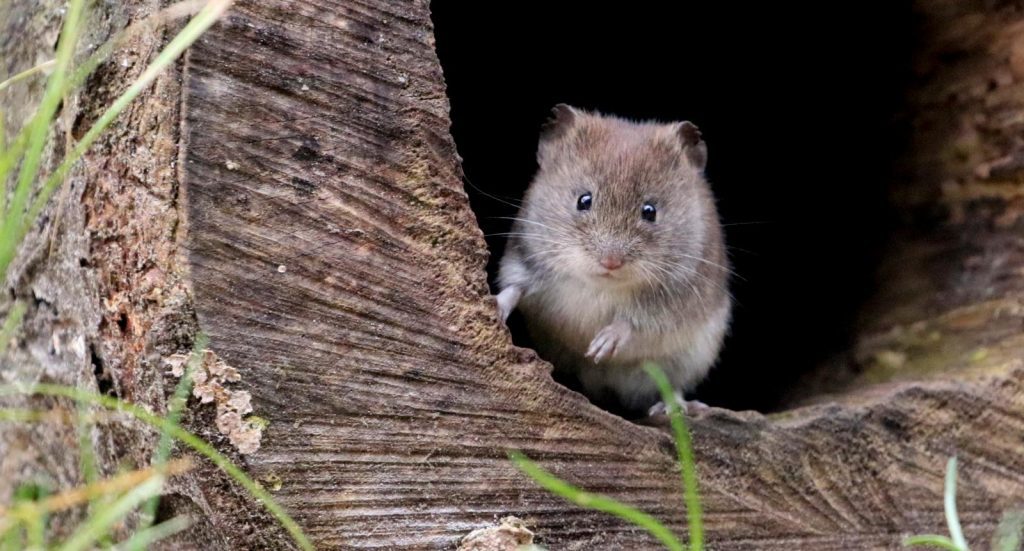The section Under the Spell… showcases people who have a special fascination with one particular aspect of nature. This month, in April rootsA conversation with ecologist Kees Mostert. Ever since he caught a field mouse in a converted bird cage at a young age, he has been obsessed with mice. “My first vole was a miracle, so beautiful in brown and white.”
Sure, there are several million mice in the Netherlands, but you rarely see one – except perhaps a house mouse in your kitchen cupboard. This is very special for animals that are at least about five centimeters in size, are not bottom-dwelling animals, and are not exclusively active at night.
“That invisible thing… to me, that's what's beautiful about them,” says Kees Mostert, a rat fan. “You know they're there, but you don't see them. Many mice feed invisibly in the grass, among the weeds and leaves. You basically know they're there thanks to their tracks. The dwarf mouse, for example, makes very beautiful round nest balls in the reeds. “Other mice posthumously reveal their presence in the pellets of birds of prey and owls. Vomit balls are very useful for mouse research.”
Straw bed
He takes a carefully closed bag containing two dark items from his backpack. “These pellets belong to a barn owl, and I recently found them near Ackerdijkse Plassen. Here in Delftsee Hute there used to be a long-eared owl, which used to roost in a tree near the deer park in the winter, but unfortunately it has disappeared. You can identify the species mainly by its teeth Animals that are eaten. The molars of carnivores are very different from those of vegetarians. Finally, you can also catch them, and then of course you will see them.
With traps like this (he dives into his backpack and pulls out an aluminum box) it's done in a mouse-friendly way. “In the trap he has something delicious to eat and a bed of straw.” An introduction to professional trapping put Mostert on the trail of mice. “When I was a little kid, I was hiking the Delftsi Hout with a friend. We thought mammals in the wild were the most beautiful thing ever – and I still think so.
We learned that there are also animals that live hidden lives. We found that interesting. Nothing is more exciting than hidden! So, once we found an old bird cage, we decided to make a trap out of it, without any knowledge of course. We did this with more cages that we placed all over Delftse Hout. To our great surprise, we once caught a field mouse. A wonderful little animal, very pretty, chestnut brown and white.” From that moment on, Mostert was fascinated. “The fascination with the world you don't see has never gone away, and I've never stopped setting traps in the Delftsie Hute and other areas, and I'm sixty-one years old now.”
Each type of mouse has its own charm
“Shall we go for a walk, and I will show you some of the habitats of the species of mice that live in the Delft Hute,” Mostert says. The diversity of this region is reflected in mice. Seven of the seventeen species that live in the Netherlands live in the Delft Hute. A lot huh? The seventeen species are divided into four families: true mice, voles, shrews, and dormice. They all have their own charm.
Real mice really look like mice, with their big ears, big eyes, and long tails. Voles look like little guinea pigs. It has thick fur and a short tail. Shrews are insectivores, not rodents. Officially, they are not mice, but everyone sees a mouse in them. They're like little moles, but above ground. Finally, the dormouse is actually a bit foreign. There are two species in the Netherlands, the acorn and the dormouse, but both are only found in southern Limburg. They're hibernating, and for a long time too!

You can read the rest of the interview with Mostert April roots.
Read/see more
- This is how it goes with – raising – the jerk mouse
- The story behind the winning photo: The striped mouse
- The common bat is very rare worldwide, but relatively common in the Netherlands. However, in recent years, the number of lake bats has declined sharply. Time to act: 2023 was the year of Pat Lake.
Text: Marjolein van Rotterdam
Photos: Case Mostert

“Lifelong entrepreneur. Total writer. Internet ninja. Analyst. Friendly music enthusiast.”








More Stories
iPhone SE 4: Bigger screen and Face ID according to new rumors
Belgian co-production with acclaimed actor Crispin Glover selected for Toronto Film Festival
Helldivers 2 Escalation of Freedom update will be released on August 6